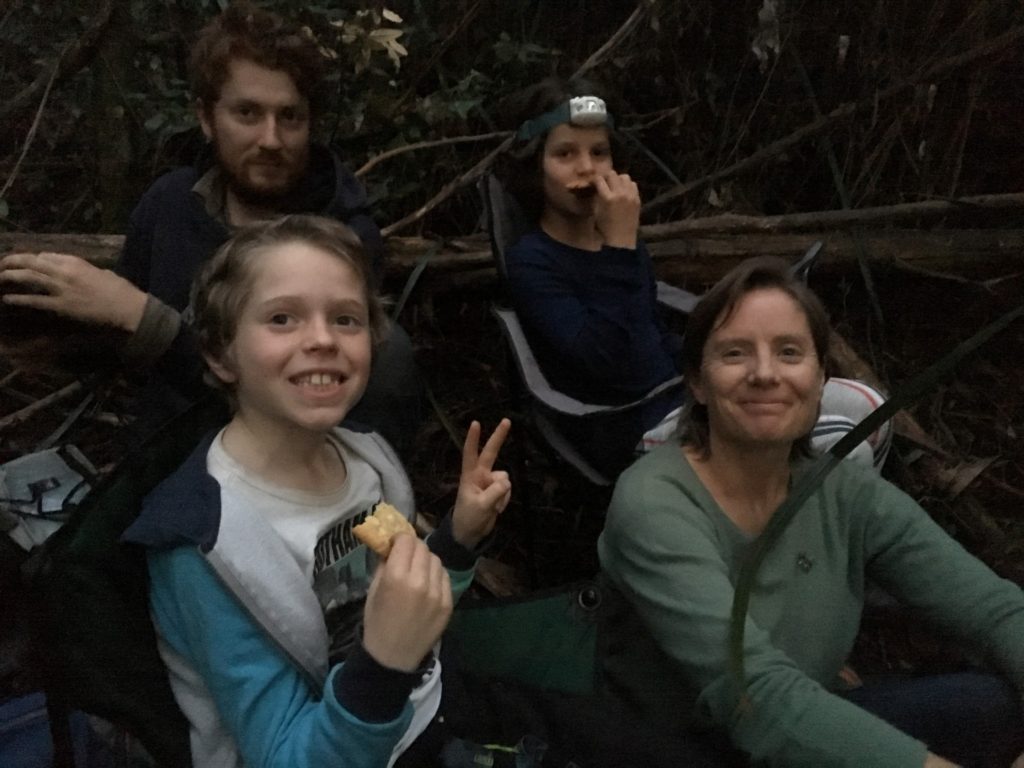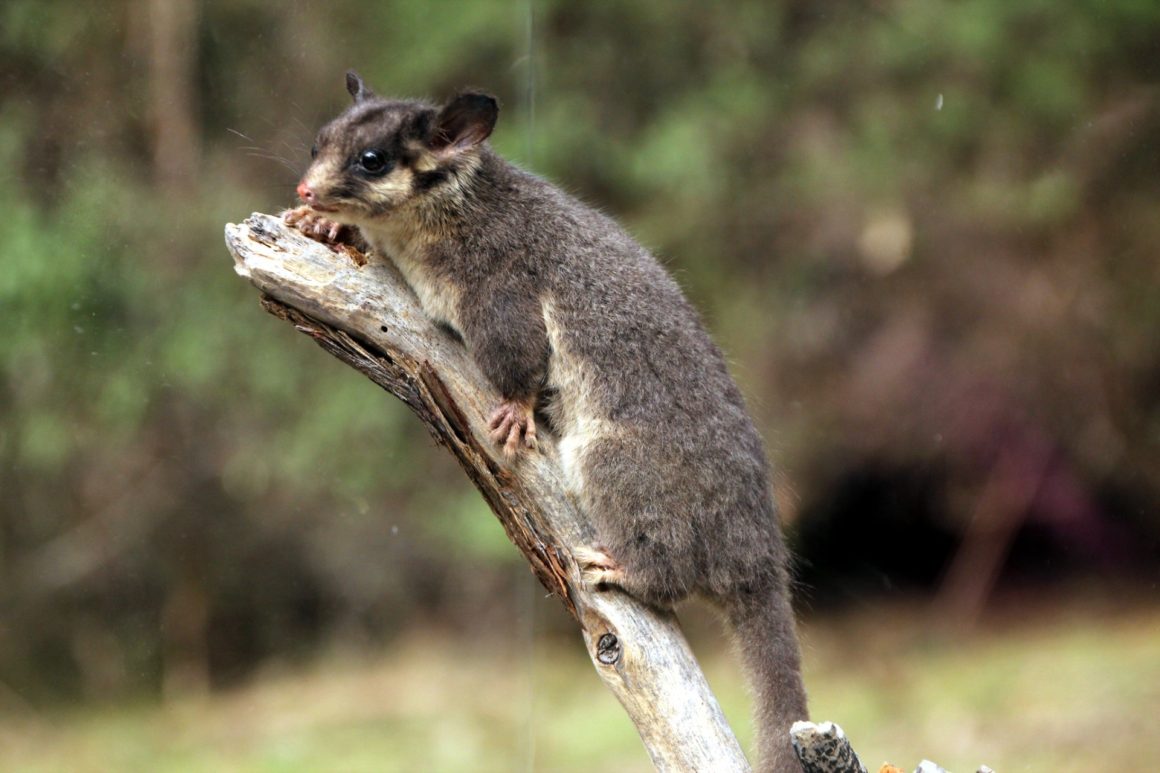If someone invited you to go ‘stag watching’, what would you expect? Would your brain start seeing pictures of majestic deer with massive antler racks? Having recently taken up just such an invitation, I can now tell you that stag watching and Bambi have nothing in common – except perhaps a certain cuteness factor.
I was in Healesville, trying to tee up an interview with citizen scientist Jake Mackenzie in connection to a picture book I’d written about Victoria’s state animal emblem, the Leadbeater’s Possum. I suggested we meet at a cafe; he instead suggested stag watching. Which, it turns out, is a nocturnal expedition into the forest to look for endangered animals.
Leadbeater’s Possums, – affectionately known as Fairy Possums – are critically endangered. They like their trees old (really old) and preferably dead or decaying. Standing at the base of one of these arboreal giants, if you tilt your head as far back as it will go, you can see, way up high, the dead branches that used to form the tree’s crown. They look a bit like antlers, which is what gives the trees the nickname ‘stags’. Not to mention, ‘stag watching’ sounds a lot cooler than going to stake out a tree.
Excited by the prospect of seeing a Fairy Possum in the wild, and knowing it was an incredibly rare opportunity, I cheekily asked if I could bring my family along. Jake, bless him, said yes. But there was a catch: they’d have to sit… and be quiet… for hours. My boys are nine and eleven, and my husband’s American. Quiet is not their natural state. But they all agreed it would be worth the pain of silence if they got to see a Fairy Possum. We drove our family wagon out to the forest, where we met up with Jake and parked by the side of a dirt road to embark on our adventure.
Being city folk, we followed Jake into the woods like lemmings. He definitely had a whiff of Indiana Jones about him, khaki-clad and guiding us in by compass bearings. Compass bearings! My kids were already developing a crush. Because we weren’t yet at the stag, talking was allowed. They peppered Jake with questions on every detail of what he does, what we were going to do, what the possums were going to do. Their little brains were well and truly in sponge-mode. My husband and I, bringing up the rear, were charmed (in between tripping over logs and panting for air). Seeing our kids idolise a dude who goes out into the woods to look for endangered animals (in his own time, on his own dime) was precious beyond words.
We arrived at the tree and took up our positions. The steeply sloped ground was damp and springy with bracken and leaf litter. We formed a tight clump – there wasn’t a lot of room amongst the fallen branches. Jake was on a camping chair. The kids were at his feet. We were in front of the kids. All eyes were looking up at our stag.

So, what’s it like to sit quietly and stake out a tree? Turns out, it’s surprisingly exciting. Adventurous, even. Remember playing hide and seek as a kid? Remember the feeling of hunkering down in your hiding spot? Barely daring to breathe and tingling with anticipation over whether or not you’ll be discovered? Stag watching felt a bit like that, only the anticipation was over whether or not the possums would be discovered. Admittedly, we were watching a stag known to house fairy possums and were fairly confident we’d see some action. Admittedly, whispering was allowed. Admittedly, the kids’ excitement was compounded by the fact they had a real job to do and were given real thermal cameras to operate (each worth a cool ten grand). Using the infra-red vision on their camera screens, their job was to let Jake know if a Fairy Possum appeared.
By now it was pitch dark. After 30 minutes or so, the first tiny possum poked its head out of a crack in the hollow trunk, about four metres above us. ‘One’s coming out!’ Eli, my oldest son, whispered eagerly. Then my husband let loose an ill-timed sneeze. ‘And now it’s going back in, thank you, Dad,’ Eli said. But thankfully, a few minutes later, the possum ventured out again. Jake switched on an infrared torch beam so we could all see it clinging, splay-legged, to the stag trunk.
We saw a total of four Fairy Possums that night. They would emerge one by one, freeze for a minute, sometimes scamper a couple of laps around the trunk’s considerable girth, then leap to a neighbouring sapling and dart off into the night to forage for food. They were nimble, tiny and extraordinarily fast.
It wasn’t your typical family-fun night, but it sure did bring us together. ‘This is the best night of my life,’ declared Jeremy, my youngest. He practically bounced back to the car. It was weird saying a quick thank you and good night to Jake by the roadside. I felt like the moment deserved more. But perhaps it was fitting, and in keeping with the evening, that words took a back seat. Eli gave Jake some cookies he’d made, and we headed off home.
As I reflect on what made that night special, I realise it’s not one thing but many. Seeing an endangered animal in the wild is an incredibly rare treat. For our family, just sitting quietly is rare! To witness something thrilling and remain quiet is rarer still. But to share such quiet exhilaration – in a group, in the dark, in a forest – was almost mystical. Disney and Bambi ain’t got nothing on that kind of magic.
To volunteer for stag watching visit wotch.org.au
Banner image of a Leadbeater’s Possum by John Englart via Flickr [CC BY_SA 2.0] Jo’s new book, Larry Leadbeater, is available through the Larry Leadbeater website, where you can also learn more about our endangered ‘Fairy Possums’.


Leave a Reply